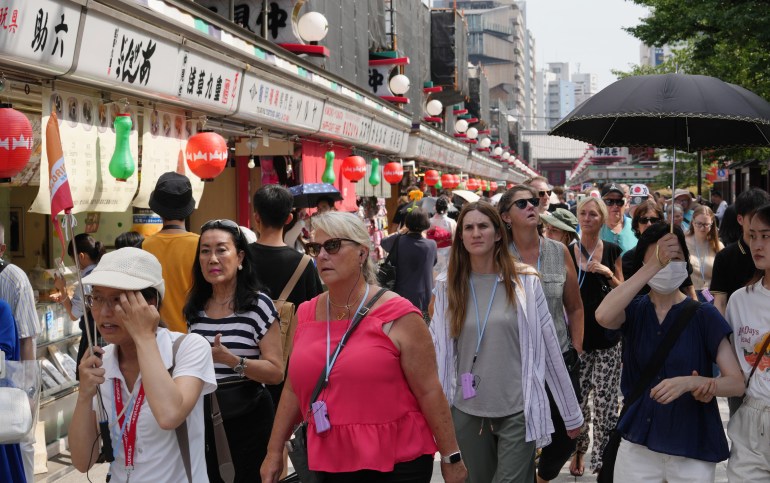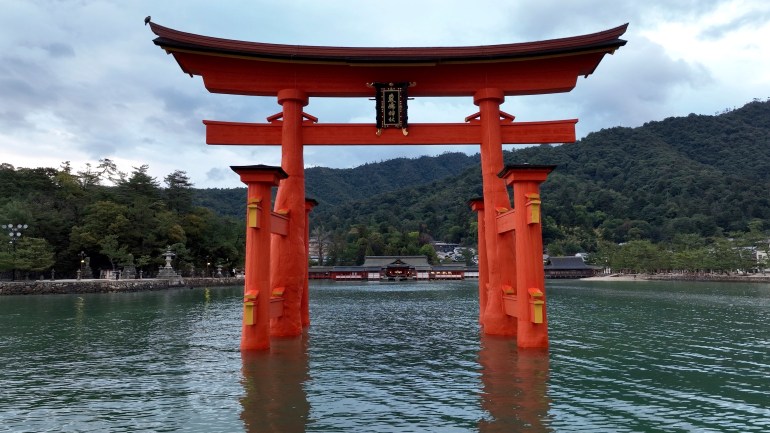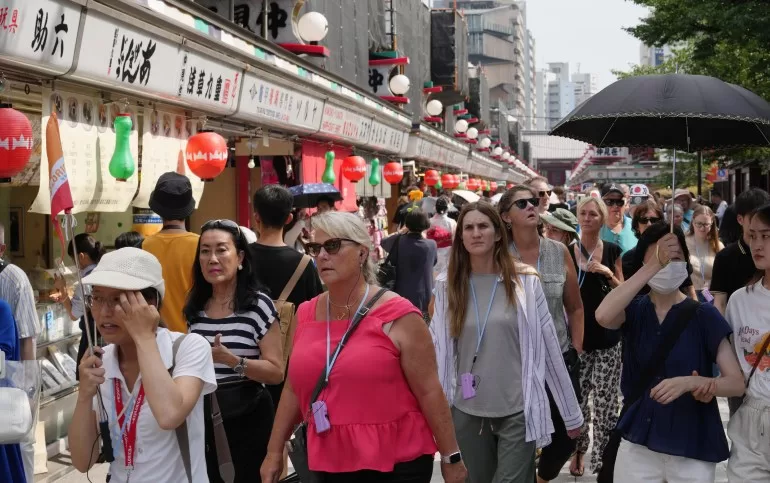Tokyo, Japan – How much are visitors to Japan willing to pay for a bowl of noodles or a helping of sushi?
With restaurant prices soaring in popular tourist areas, the question is no longer rhetorical.
In Niseko, a ski resort in Hokkaido famous for its powdery snow, a bowl of crab ramen can cost up to 3,800 yen ($24.68) and katsu curry up to 3,200 yen ($20.78) – around three times as much as in nearby Sapporo, one of Japan’s culinary hubs.
In Toyosu Senkyaku Banrai, a restaurant area next to Tokyo’s largest seafood market, a bowl of rice topped with sashimi can cost almost 7,000 ($45.46) – or five times what locals would typically expect to pay.
Street stalls in Tokyo’s Tsukiji Market, Kyoto’s Nishiki Market and Osaka’s Dotonbori neighbourhood have also raised eyebrows with nibbles priced well above the going rate.
As Japan experiences a surge in tourists on the back of a weak currency, some businesses are charging a premium for their fare.
The practice has even led to the coining of a slang expression, “inbound-don”, to describe rice bowls priced with deep-pocketed tourists in mind.
Nearly 17.8 million people visited Japan in the first half of 2024, surpassing the previous record of 16.63 million in 2019, according to the Japan National Tourism Organisation (JNTO).

The surge in arrivals has been spurred, in part, by the slumping value of the yen, which is trading near a 40-year low against the dollar.
As a result, travellers are not necessarily baulking at restaurant prices that are equivalent to what they’d pay for often lower-quality food back home.
Some restaurants, concerned about alienating local clientele, have confined the price hikes to non-residents only.
Tamateboko, a seafood buffet restaurant in Tokyo’s Shibuya, recently introduced a two-tiered pricing structure, offering a 1,000-yen ($6.49) discount to all Japanese citizens and residents of Japan.
A weekday lunch costs 5,478 yen ($35.58) for citizens and residents, and 6,578 yen ($42.72) for foreign travellers.
While it is not unheard of for restaurants to have different prices on their Japanese- and English-language menus, Tamateboko’s decision was widely reported in international media, igniting heated discussion about two-tiered pricing in Japan’s hospitality sector.
Kumi Kato, a professor of tourism at Wakayama University in Japan’s southwestern Kansai region, said she was worried about the optics of the trend, cautioning against any policies that could be perceived as discriminatory.
“Identifying foreign guests invited by Japanese or tax-paying foreign residents [at restaurants] will be difficult,” Kato told Al Jazeera.
“Japanese and non-Japanese-type segregation will bring unpleasant tension and discontent … We need to be very careful about that.”
Leaving a bad taste
While tourism industry insiders believe Japan should capitalise on inbound visitors’ increased purchasing power, some are sceptical that two-tiered pricing is the way to do it.
Andres Zuleta, founder of Boutique Japan, a luxury travel company that offers customised holidays, said that while he is “all for Japan finding ethical and creative ways to monetise the tourism boom,” businesses that charge different prices based on nationality are likely to generate resentment.
“Discounted pricing for locals could make sense, but having different prices on an English menu versus a Japanese menu is bound to leave a bad taste – excuse the pun – in people’s mouths. The idea of tiered pricing seems more likely to be palatable at [tourist] sites and such,” Zuleta told Al Jazeera.
Andrew William, founder of Kyoto-based tour company An Design, said that while it is understandable for businesses to charge foreigners prices they would expect to pay at home when they are making bookings from overseas, it is riskier doing so in Japan.
“A sign with a two-tiered pricing would look very bad,” William, whose tour company specialises in off-the-beaten-track tours of Kyoto’s ancient spiritual sites and gardens, told Al Jazeera.
“Plus, are locals going to have to show their ID everywhere they go? Maybe that isn’t so bad, but it seems awkward.”
Still, some Japanese officials appear unperturbed about foreigners’ perceptions.
Hideyasu Kiyomoto, the mayor of Himeji City, recently suggested that foreign tourists pay up to four times more than the standard admission rate to visit Himeji Castle, Japan’s first UNESCO World Heritage Site.
Osaka Governor Hirofumi Yoshimura expressed his support for the idea, suggesting he could adopt a model for Osaka Castle.
The head of the Hokkaido Tourism Organization has also called on businesses across Japan’s northernmost main island to set different prices for tourists and locals.
Among those arguing in favour of charging foreign tourists more, the rationale has run the gamut from covering the costs of heritage conservation to training English-speaking staff.
Kato, the Wakayama University professor, said that proprietors need to be more specific and transparent about the costs.
“Heritage conservation itself shouldn’t be the reason for charging foreigners more,” she said.
“And language issues shouldn’t be the onus of individual businesses or establishments. There should be government support for implementing multilingual interfaces and training English-speaking guides.”

Japanese authorities asking visitors to cough up more than locals is not without precedent.
Miyajima Island, a popular attraction off the coast of Hiroshima, famous for its forests and the “floating” gate of Itsukushima shrine, introduced a tourist tax in October 2023.
Since July, hikers hoping to climb Mt Fuji’s most popular trail have been required to pay a 2,000-yen ($12.99) entrance fee.
Since 2019, foreign travellers have also been levied 1,000 yen upon departure, which officials said would be used to help improve tourism infrastructure, such as Wi-Fi and multilingual support.
Kato said Japan has a lot to offer as a travel destination, but the country should only extract more money from visitors if the price is commensurate with the value of the experience.
“I don’t want to see a confrontational approach: charge extra for everything and charge money to enter everywhere,” she said.
“Remember, tourism should always be a happy industry.”
